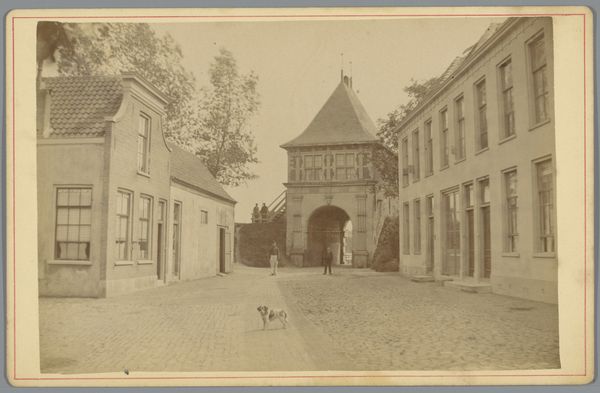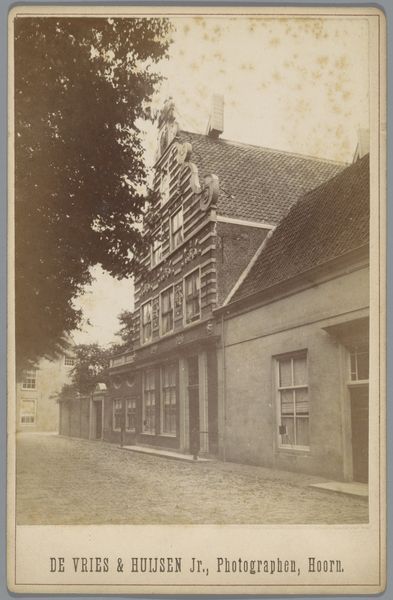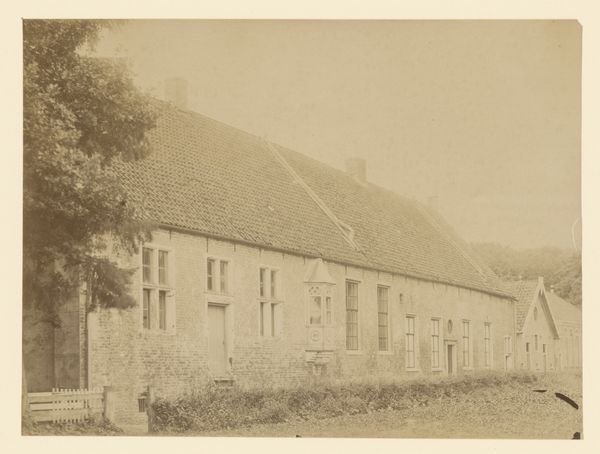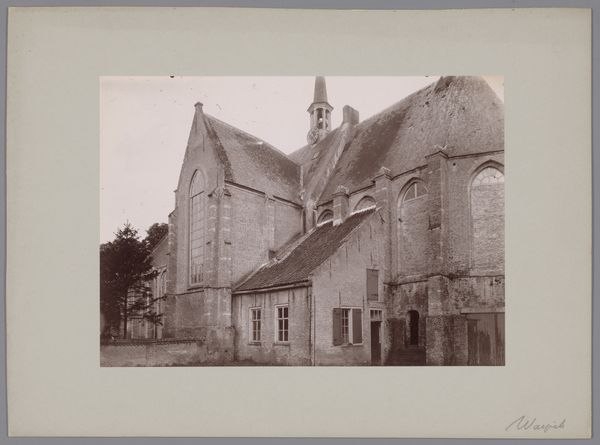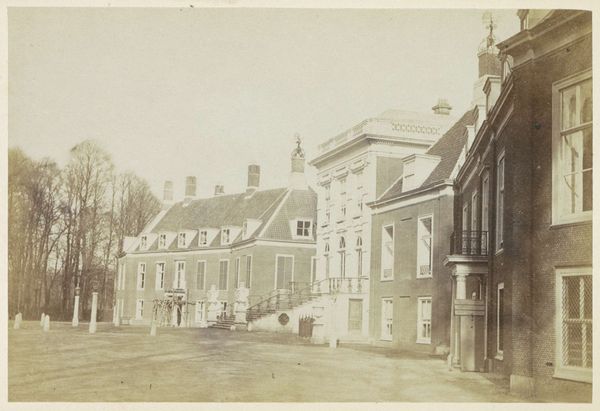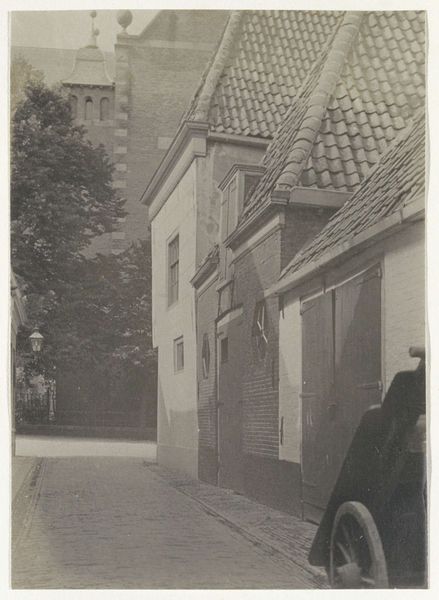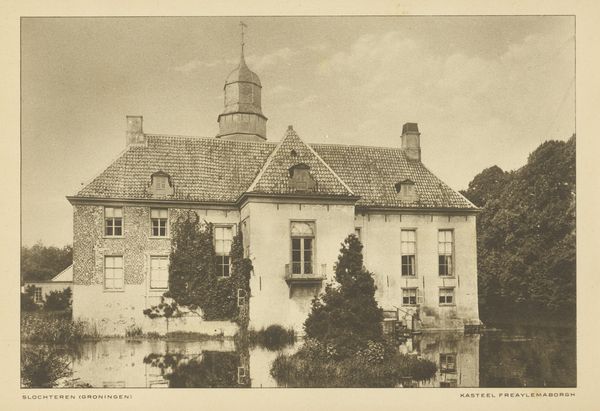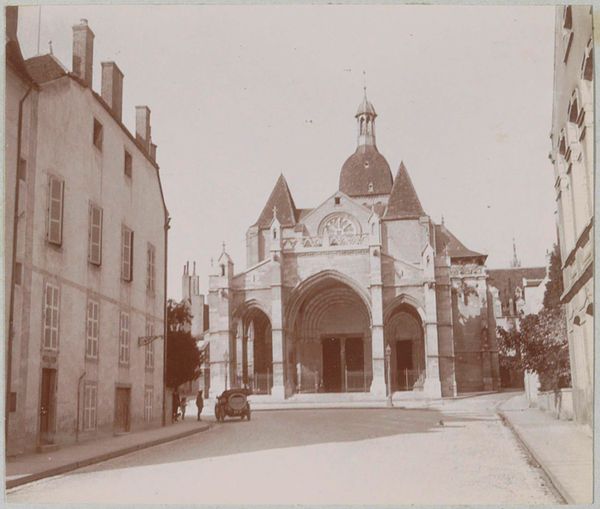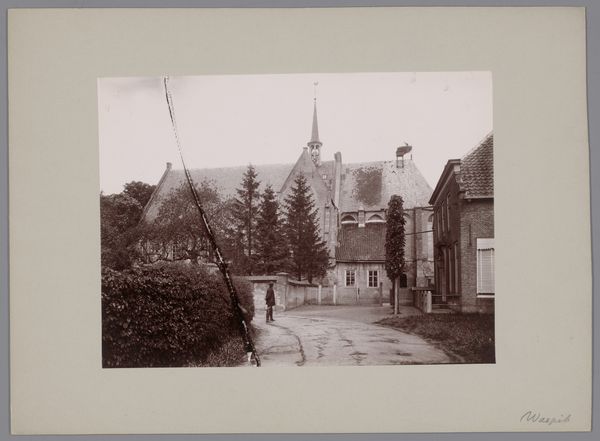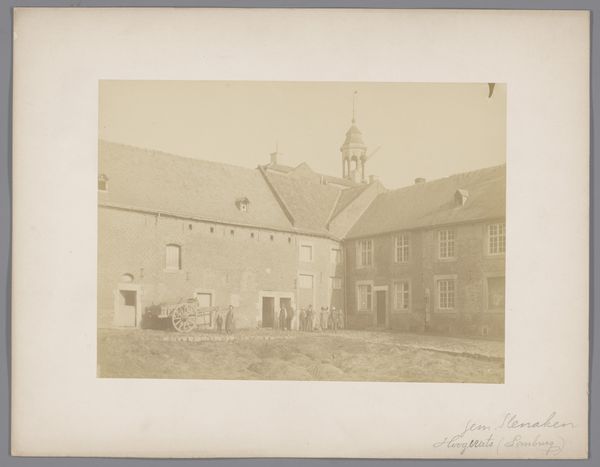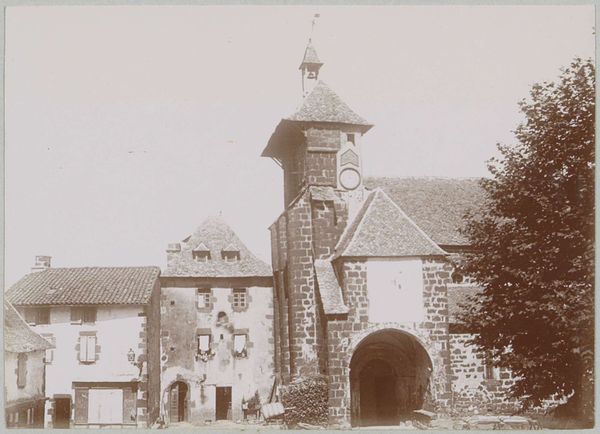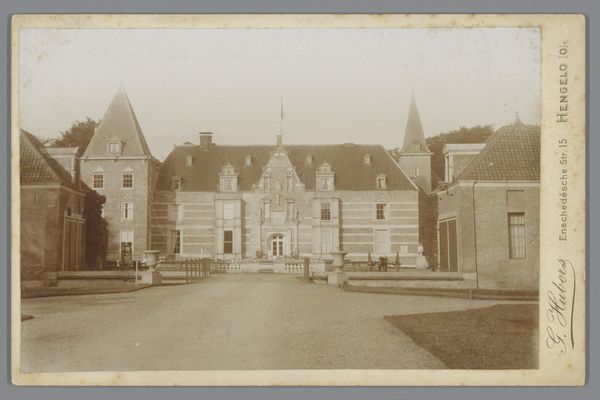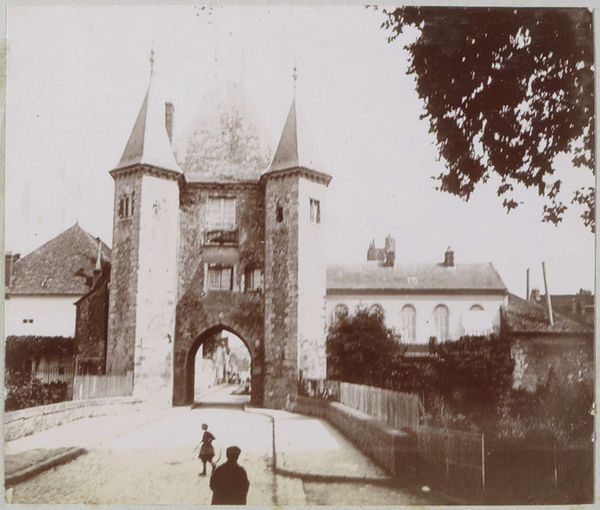
print, photography, architecture
#
16_19th-century
# print
#
landscape
#
photography
#
cityscape
#
architecture
Dimensions: height 76 mm, width 110 mm
Copyright: Rijks Museum: Open Domain
Curator: This photograph, titled "Huizen en poort te Coucy-le-Château," captures a quaint cityscape sometime between 1896 and 1899. Editor: It has an incredible sense of stillness. The buildings are austere and there is limited texture. Is it printed on albumen paper, do you know? The light feels so ethereal. Curator: I believe so, judging from the sepia tones and surface quality. You can almost feel the texture of the handmade paper that has been exposed, fixed, and washed to get the tones we see. And it makes sense considering the socio-economic conditions for artists choosing printing. This choice offers insight into contemporary labor practices of this era, right? Editor: Absolutely. There is so much implied in photographic printing. Given the choice of subject matter, the artist's attention seems deliberately focused on this old gate. Note how he has centered it within the frame? Curator: What effect does that placement have, do you think, in the way that you're viewing the architectural scene, framed as a landscape? Editor: Well, I think it definitely elevates the ordinary and lends a certain weight to what might otherwise be seen as a simple snapshot. The photographer is playing with ideas of what constitutes 'art,' no? But do we know why this cityscape, and Coucy-le-Château, specifically? What are we meant to infer from his choosing the location of houses, and a gate to study at length? Curator: Well, from a purely materials perspective, we see buildings as buildings, gate as gate. However, looking at architectural studies historically, photographs often serve to record, categorize, and preserve architectural marvels and histories. I'd posit this photograph presents that function in an intentional way that acknowledges photography as more than the subject material on which it draws its themes. Editor: It’s funny you mention function, as I find myself looking at the cobblestones – the physical ground on which this small drama unfolds, so to speak, for me more closely now. As the materiality has been preserved and captured so dutifully here. It lends a strange authority to something old, even though it’s been documented via a fairly contemporary medium! Curator: Right, so the print, through the subject matter and chosen medium, serves as its own meta-commentary. Thanks for highlighting that relationship between art, medium, and meaning! Editor: Likewise; examining the interplay between presentation, paper, and social commentary is fascinating.
Comments
No comments
Be the first to comment and join the conversation on the ultimate creative platform.

